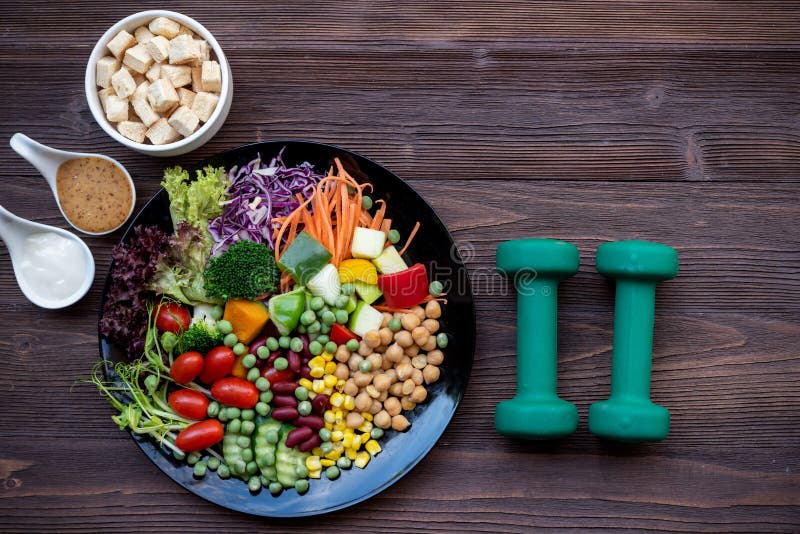Cardio Workouts for Weight Loss: Your Comprehensive Guide to Burning Fat Effectively
Introduction: Why is Cardio the Key to Fat Burning?
Cardio (Cardiovascular) or Aerobic Exercise has long been associated with physical fitness and general health, but its role becomes even more critical when the specific goal is weight loss and fat burning. The desire for a fit and healthy body is not just an aesthetic goal; it is an investment in the quality of life and the prevention of chronic diseases.
Cardio exercises, which literally mean "heart and blood vessel exercises," are physical activities that continuously raise the heart rate and breathing for a specific period. This increase in activity boosts the body's need for oxygen, which stimulates the process of burning calories, primarily stored fat, to provide the necessary energy for movement.
In this comprehensive guide, we will delve into the mechanism by which cardio exercises work to burn fat, review the best types of these exercises, and provide you with practical strategies for designing an effective and sustainable cardio program that ensures you reach your weight loss goal.
---
1. The Scientific Mechanism of Fat Burning Through Cardio
To understand how cardio works as a fat-burning machine, we must realize that the body uses different energy sources during physical activity.
A. Cardio and Calorie Burning
The basis of weight loss is achieving a Caloric Deficit, meaning consuming fewer calories than the body burns. Cardio exercise is the most effective tool for increasing the "burning side" of this equation.
When you start doing cardio, your body begins to use glucose (sugar) stored in the muscles and liver as the primary energy source. As the exercise continues, especially after a period of 20 to 30 minutes, the body gradually shifts to using stored fat as the main fuel source. This process is the core of fat burning.
B. The Fat Burning Zone
The term "Fat Burning Zone" refers to a specific heart rate range, believed to be the optimal range that encourages the body to use fat as fuel instead of carbohydrates. This range is typically estimated to be between 60% to 70% of your Maximum Heart Rate.
How to calculate your Maximum Heart Rate? It can be estimated by subtracting your age from 220. Example: If you are 30 years old, your maximum heart rate is: 220 - 30 = 190 beats per minute. Fat Burning Zone (60-70%): Between 114 and 133 beats per minute.
| Age | Maximum (220 - Age) | Fat Burning Zone (60-70%) |
|---|---|---|
| :---: | :---: | :---: |
| 25 | 195 | 117 - 136 |
| 35 | 185 | 111 - 130 |
| 45 | 175 | 105 - 122 |
C. The Afterburn Effect (EPOC)
One of the most important benefits of cardio, especially high-intensity exercise, is the phenomenon of Excess Post-exercise Oxygen Consumption, or what is abbreviated as EPOC. After an intense workout, your body continues to consume oxygen at a higher rate than usual to return to a resting state, and during this period, it continues to burn extra calories, even while you are resting. This effect makes high-intensity exercises an excellent choice for increasing total calorie burn throughout the day.
---
2. Types of Cardio Workouts: Comparing HIIT and LISS
Cardio exercises are mainly divided into two types, which differ in intensity and duration, and each has its unique benefits for fat burning:
A. Low-Intensity Steady State (LISS) Cardio
This is the traditional type of cardio, which involves performing an activity at a moderate and constant intensity for a relatively long period.
Intensity: Low to moderate (within 60-70% of maximum heart rate). Duration: Long (30-60 minutes or more). Examples: Brisk walking, cycling at a steady pace, light swimming. Fat Burning Advantage: Burns a higher percentage of fat as fuel during the workout itself. Ideal for beginners or those with injuries.
B. High-Intensity Interval Training (HIIT)
It consists of short, very intense periods of exercise (at an intensity of up to 80-95% of maximum heart rate) interspersed with periods of rest or low-intensity activity.
Intensity: Very high and intermittent. Duration: Short (10-30 minutes). Examples: Sprinting followed by walking, Burpees, fast jump rope. Fat Burning Advantage: Although it may not burn more fat during the workout compared to LISS, the EPOC effect is much higher, meaning the calorie burn continues for hours after the workout is finished.
| Feature | HIIT (High Intensity) | LISS (Low Intensity) |
|---|---|---|
| :---: | :---: | :---: |
| <strong>Duration</strong> | Short (10-30 minutes) | Long (30-60 minutes) |
| <strong>Intensity</strong> | Very high and intermittent | Low to moderate and steady |
| <strong>Calorie Burn During Workout</strong> | Very high | Moderate |
| <strong>Afterburn Effect (EPOC)</strong> | Very high (lasts for hours) | Low |
| <strong>Suitable for</strong> | Advanced, busy people, fitness improvement | Beginners, recovery, muscle preservation |
---
3. Best Practical Cardio Workouts for Fat Burning
Whether you prefer exercising at home or in the gym, there are effective options for everyone:
A. Cardio Workouts at Home
1. Jumping Rope: Effectiveness: Considered one of the best exercises for burning calories in a short time. It can burn up to 10-15 calories per minute. Practical Tip: Start with 30 seconds of moderate jumping followed by 15 seconds of rest, and repeat for 10 minutes.
2. Jumping Jacks: Effectiveness: A full-body exercise that quickly raises the heart rate. Practical Tip: Perform 3 sets of 50 repetitions as part of a warm-up or as an active period in a HIIT workout.
3. Stair Climbing: Effectiveness: An excellent exercise for strengthening lower body muscles and burning fat, especially in the glutes and thighs. Practical Tip: Use your home stairs or a sturdy step, and climb up and down for 15-20 continuous minutes.
B. Cardio Workouts at the Gym or Outdoors
1. Running/Jogging: Effectiveness: Classic and effective. Running burns more calories than walking. Practical Tip: If you are a beginner, follow a "walk-run" alternating system (one minute of running, two minutes of walking) to gradually increase your endurance.
2. Cycling: Effectiveness: A low-impact exercise, making it ideal for those with joint problems. Practical Tip: Use a stationary bike at the gym or a bicycle outdoors. Try switching between high resistance and speed to mimic a HIIT workout.
3. Rowing: Effectiveness: Considered a comprehensive full-body exercise, engaging the legs, core, and arms. Practical Tip: Aim for 20 minutes of rowing at a moderate to high intensity, focusing on correct pulling technique.
---
4. Practical Strategies for Maximizing Fat Burning
To get the most out of your cardio workouts, you should integrate them into a healthy lifestyle and follow smart strategies:
A. Combining Cardio with Resistance Training
Many believe that cardio alone is enough for weight loss, but the truth is that combining it with Resistance Training (weightlifting) is the golden strategy.
Muscle Building: Resistance training builds muscle mass. Increased Metabolism: The more muscle mass you have, the higher your Basal Metabolic Rate (BMR), meaning you burn more calories even at rest. Timing: Some prefer to perform resistance training first, then finish the session with 20-30 minutes of cardio (HIIT or LISS) to ensure glucose stores are depleted and fat burning begins immediately.
B. Fasted Cardio
Performing cardio early in the morning before breakfast (on an empty stomach) is a common strategy. The theory is that low blood glucose levels force the body to resort to stored fat as an immediate energy source.
Tip: This method can be effective, but it is not suitable for everyone. If you feel dizzy or severely fatigued, you should stop and have a light meal. Cardio in this case should be LISS (brisk walking) to avoid muscle loss.
C. Nutrition is Key
Cardio workouts alone cannot compensate for a poor diet. Your diet must support your fat-burning goal:
Protein: Consuming enough protein is essential for maintaining muscle mass during weight loss. Complex Carbohydrates: Choose complex carbohydrate sources like oats and whole grains to provide sustained energy for long cardio sessions. Hydration: Drinking water regularly before, during, and after exercise is vital for maintaining optimal body performance.
D. Consistency and Variety
Consistency: Adhering to a fixed schedule (3-5 times a week) is more important than the intensity of the workout.
- Variety: Do not stick to one type of cardio. Switch between HIIT and LISS to avoid the adaptation "plateau" that the body reaches, and to maintain enthusiasm and motivation.
---
5. Suggested Weekly Cardio Program Schedule (Intermediate Level)
You can use this schedule as a starting point, modifying it to suit your fitness level and goals:
| Day | Workout Type | Duration | Intensity | Primary Goal |
|---|---|---|---|---|
| :---: | :---: | :---: | :---: | :---: |
| <strong>Sunday</strong> | LISS Cardio (Brisk Walk/Cycle) | 45 - 60 minutes | 60% - 70% | Direct Fat Burning |
| <strong>Monday</strong> | Resistance Training + HIIT Cardio | 20 minutes HIIT | 80% - 95% | Increase Afterburn Effect (EPOC) |
| <strong>Tuesday</strong> | Active Rest (Stretching/Yoga) | 30 minutes | Very Low | Muscle Recovery |
| <strong>Wednesday</strong> | LISS Cardio (Swimming/Elliptical) | 45 minutes | 65% | Improve Endurance |
| <strong>Thursday</strong> | Resistance Training + HIIT Cardio | 25 minutes HIIT | 85% - 95% | Muscle Building and Fat Burning |
| <strong>Friday</strong> | Long LISS Cardio (Nature Walk) | 60 - 75 minutes | 60% | Mental Health and Endurance |
| <strong>Saturday</strong> | Complete Rest | - | - | Full Recovery |
---
Conclusion: Cardio as a Lifestyle
Cardio workouts for weight loss are not just a temporary means to shed extra pounds; they are an essential part of a healthy and sustainable lifestyle. Scientific studies have proven that regular cardio not only helps burn fat but also promotes heart health, improves mood, and increases energy and focus levels.
Remember that the weight loss journey is a marathon, not a sprint. Start slowly, listen to your body, and commit to variety and consistency. By intelligently integrating cardio with a balanced diet and resistance training, you will be able to transform your body and achieve your health and fitness goals effectively and confidently. Make movement an integral part of your day, and you will find that the results go beyond just weight loss to include better health and a more vibrant life.



